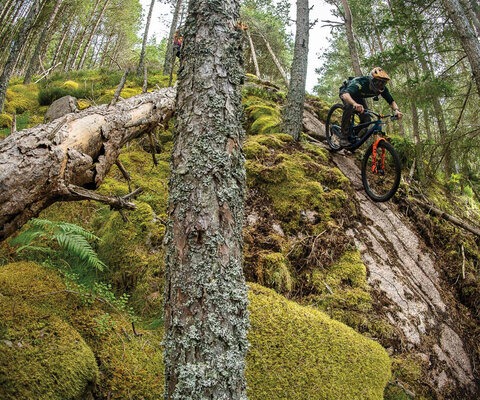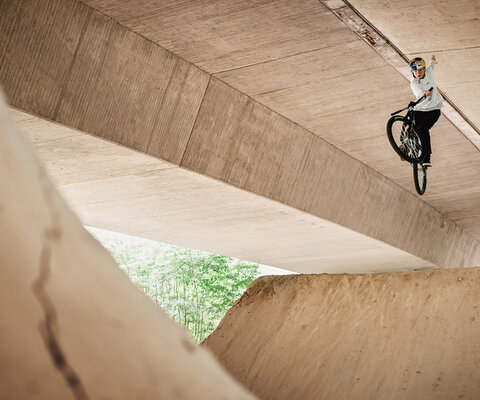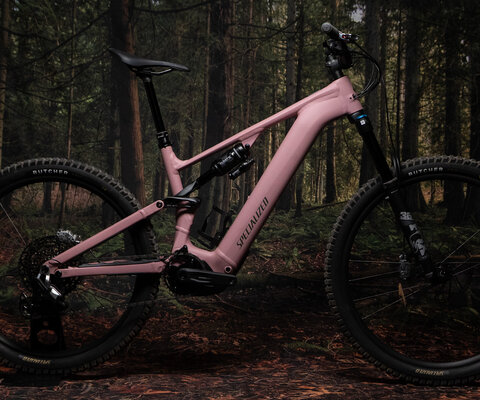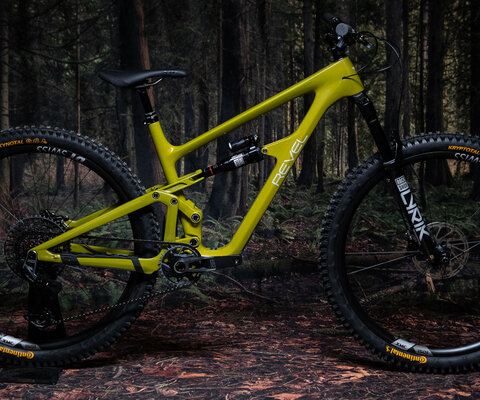
The Responsibility of Freedom Self-Reliance is Paramount
Words by Brice Minnigh | Photos by Victor Brousseaud
Words by Brice Minnigh / Illustration by Victor Brousseaud
There’s no question that we mountain bikers are going farther on our bikes than ever before. The advent of modern suspension technology, lightweight frames, dropper posts and reliable brakes and tires has made it easier for us to venture higher into the mountains and wander deeper into places once considered downright crazy to explore by bike.
At the same time, advancements in bike-bag design have made it possible to pack ultra-lightly, stuffing the bare essentials into waterproof seat and handlebar bags compact enough to allow for unmitigated singletrack shredding on a fully loaded mountain bike. This, along with continued refinements in backcountry expedition gear, makes surviving in abject wilderness all the easier and compels many of us to roam inhospitable environments with unprecedented confidence.
Gone are the days when bulky panniers largely limited us to dirt roads and primitive doubletrack. What was once described as “extreme bike touring” has come to be known as “bikepacking,” and it is no longer considered a fringe activity for loners and lunatics. More people than ever before are taking their bikes into the wilds, from over-nighters near home to multi-day traverses of the planet’s tallest mountain ranges.
We’ve proven we can go almost anywhere on a bike—even to high-elevation zones without the slightest trace of a trail. Long the domain of backcountry skiers and snowboarders, rocky alpine ridgelines are now fair game for mountain bikers, with terms like “exploratory bikepacking” and “backcountry freeride” used to describe niche disciplines. The modern mountain bike is increasingly being viewed as the ultimate tool for adventure and freedom.
But with freedom comes responsibility, both for fragile habitats through which we tread and for our own self-preservation. Some of us—myself included—have been guilty of pushing the safety envelope in remote regions of the world, at times ignoring genuine political risks and neglecting to devise clear exit strategies. In an effort to save weight, we’ve skimped on everything from food supplies to warm clothing and even GPS devices that could serve as essential communication outlets in the event of an emergency. More than once, we’ve survived only by the skin of our teeth.
We’ve even had the audacity to create short films celebrating the limitlessness of the bike as a means for exploration, at times deliberately making the endeavors look easy and carefree. But the truth is that agonizing physical and psychological challenges routinely arise, even when well-prepared. The potentially lethal threat of sustaining serious injury—even among those with boundless experience—is ever-present.
Satellite mapping services such as Google Earth are indispensable instruments for route planning, but they can be extremely deceptive in how they make the world seem small and more accessible than it actually is. Aerial views of alluring terrain lead us to temptation, but the technology itself cannot deliver us from danger. As trail-mapping apps grow in popularity (one such app stated recently that its intention is to “map every trail in America, and eventually the world”), more and more people will ramble into wilderness guided only by a smartphone—a tool limited entirely by its finite battery life and hydrophobic internal electronics, not to mention its reliance on a cell signal.
This phenomenon could be a net positive for humanity, but only if we simultaneously rely on time-tested principles of navigation. Smartphone-based apps and GPS units are indeed important equipment—especially for coordinating search-and-rescue efforts—but they are fallible and should never be substituted for up-to-date paper maps. When batteries die and cell signals vanish, a waterproofed topographic map’s value quickly becomes evident.
Having an emergency plan in place should be mandatory, especially for multi-day missions in unfamiliar territory. Designate a trustworthy friend or family member as your contact and leave them with an outline of your route and rough itinerary. Invest in a GPS satellite communicator and familiarize yourself with its many functions. Not only will it be handy for cross-referencing route options, but it will enable you to send texts with your latest coordinates. In worst-case scenarios, it also will allow you to call for an emergency evacuation.
Of course, none of this can supplant the need to be completely self-reliant. Careful research will inform you about expected weather patterns and dictate the type of clothing you’ll need to carry. In the alpine, items such as a waterproof shell, down jacket and moisture-wicking base layers are compulsory—regardless of the time of year—and a spare set of dry socks and thermal underwear should be kept in dry bags to keep you warm and cozy in your tent at night.
Bringing adequate food is imperative, including high-calorie snacks that can be consumed throughout the day. Dehydrated meals are lightweight and ideal for evening carbo-loading, and a breakfast of hot oatmeal will always make for a fortifying start to your morning—especially if you sprinkle it with dried fruits and nuts. Clean drinking water is paramount, so always bring a pump filter, purification tablets or both. Food planning is fun, and most seasoned adventurers have winnowed theirs to a fine art.
Though a first-aid kit adds weight and takes up space, it should never be left at home, even on short excursions. Most commercially available kits contain the basics of bandages, gauze, alcohol wipes, anti-inflammatories and an EpiPen, but it never hurts to augment with painkillers, allergy medicines, antidiarrheals and even a course of multi-purpose antibiotics. A foldable splint can get you out of tough breaks, particularly in remote alpine areas where it’s hard to find materials for an improvised splint. Knowing how to respond to critical injuries can mean the difference between life and death, so completing a wilderness first aid course is highly recommended.
Ultimately, your bike is your lifeline, so keeping it running smoothly is requisite. Even the latest and greatest is prone to failure. Every team should have a set of proven tools, including lightweight hand and shock pumps, a multi-tool with Allen keys, Torx wrenches and a chain-breaker, plus tire plugs, spare brake pads, needle-nose pliers and chain lube. For extended expeditions in unforgiving terrain, it’s a good idea for every group to have a bleed kit, a spare derailleur, a replacement brake rotor and a backup tire. If you divvy the items evenly across your crew, everyone can keep their loads light and the shredding heavy.
We’re in a golden age of mountain biking. And running tight programs as we push the boundaries of possibility will help ensure we stick around to enjoy it.
For more on Trail Etiquette check out the other stories in the series.
For more on Trail Etiquette check out the other stories in the series.
For more on Trail Etiquette check out the other stories in the series.





